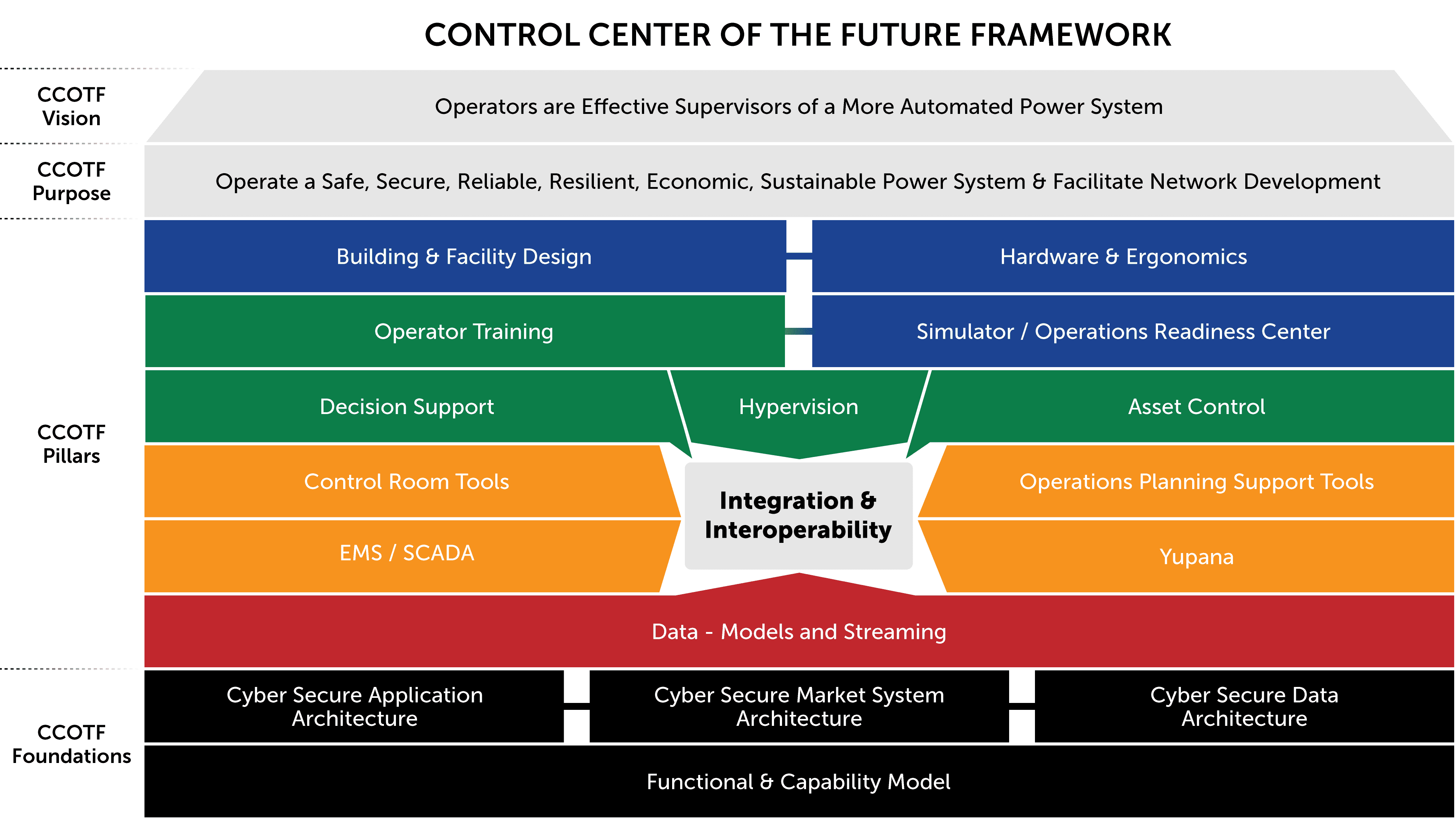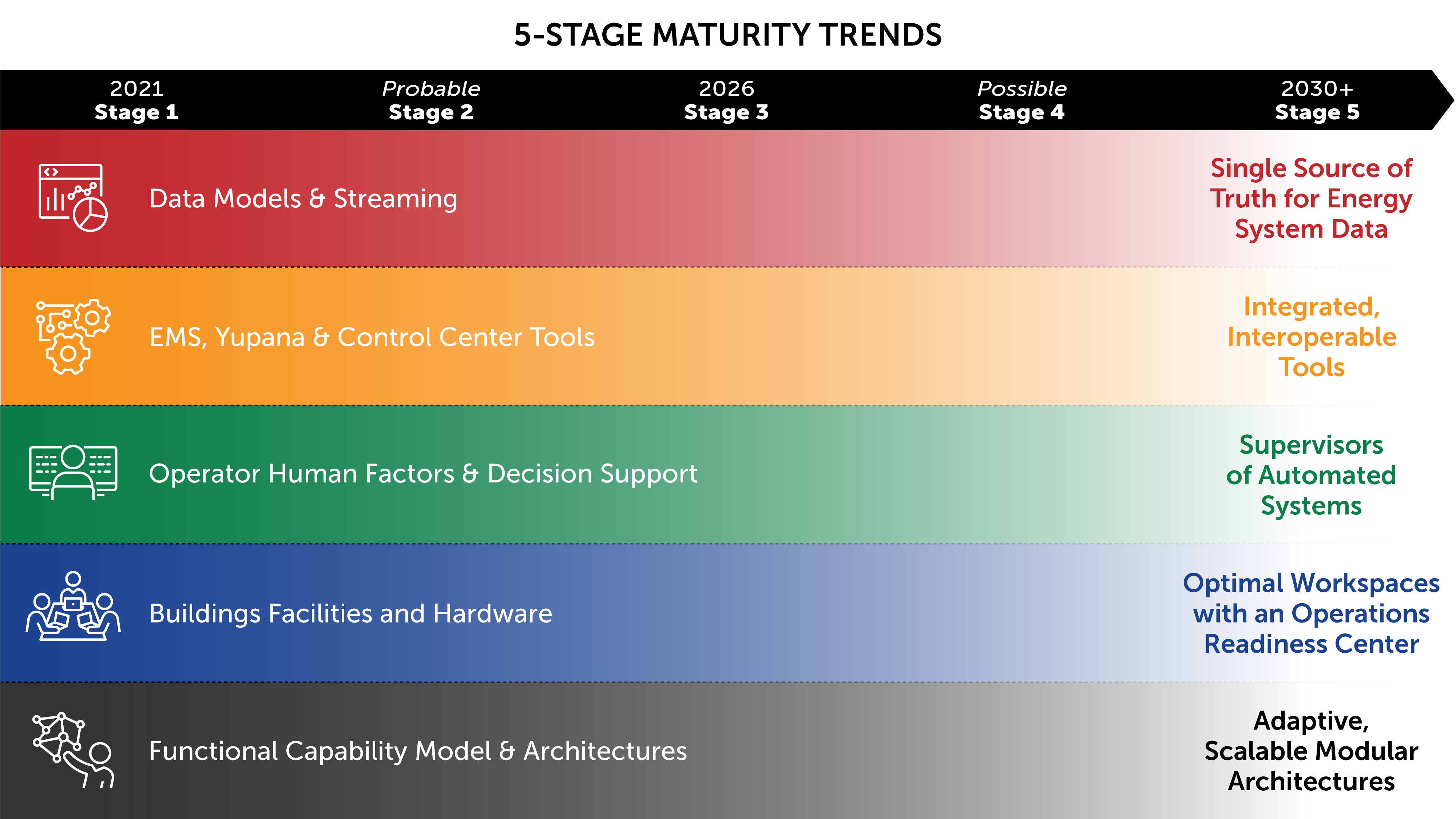Peru’s system operator, Comité de Operación Económica del Sistema Interconectado Nacional (COES), is embarking on a shift to higher wind and solar energy penetrations in its power system. The organization expressed interest in possible recommended investment priorities to adapt to more variable generation, as well as shifting energy demand profiles through electrification and increased growth rates. Under the G-PST’s System Operator Technical Support Pillar (Pillar 2), core team organizations the Electric Power Research Institute (EPRI) and NREL developed an in-depth assessment of the optimal approaches for control center improvement that COES might consider to meet the demands of the future power system.
The vision for the control center of the future outlined in this assessment is aimed to position COES at the forefront of innovation in control center and operational capability. It is an ambitious plan that aims to ground the development of operational technology and the control center in the context of rapidly increasing generation, demand, and network growth in the coming decade. The road map is structured in five key areas: architecture, data, control center tools, human factors, and buildings and hardware, with eleven key pillars of innovation within each area. Part of the framework included developing a potential pathway to 2030 and beyond, while recognizing the uncertainty in projected growth forecasts. The road map is not intended to be an implementation plan or course of action for COES to follow necessarily, but rather is an indicative and visionary way of considering the best approaches for achieving their operational goals.
Explore the full road map below:



